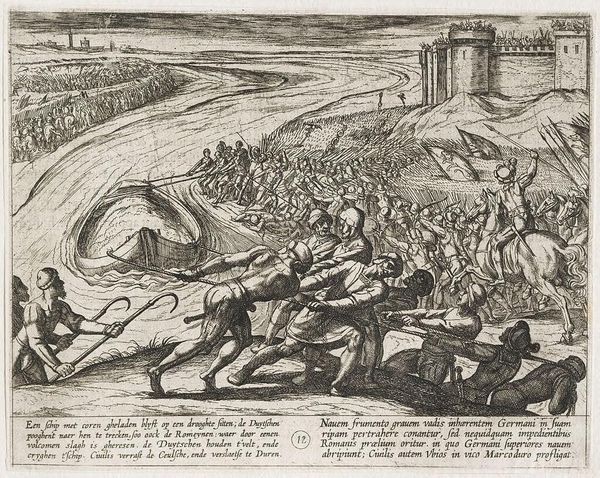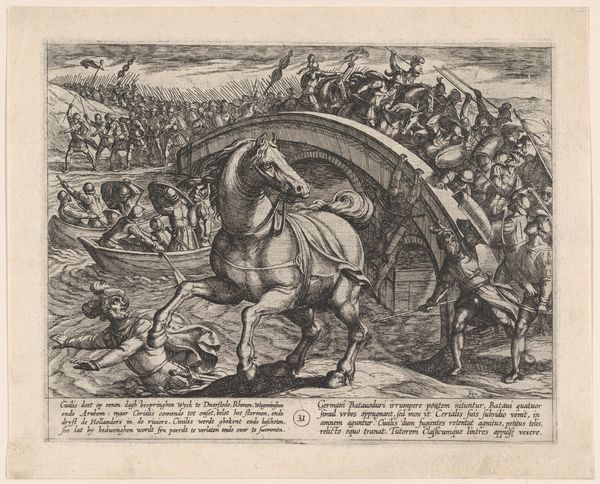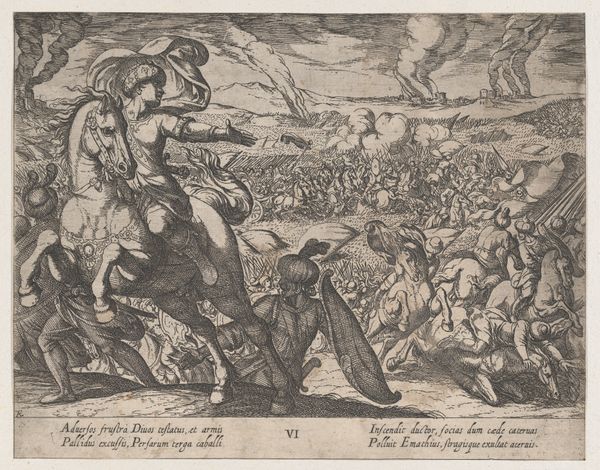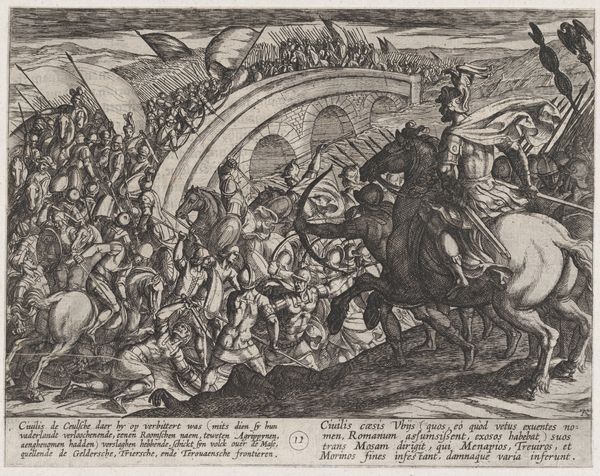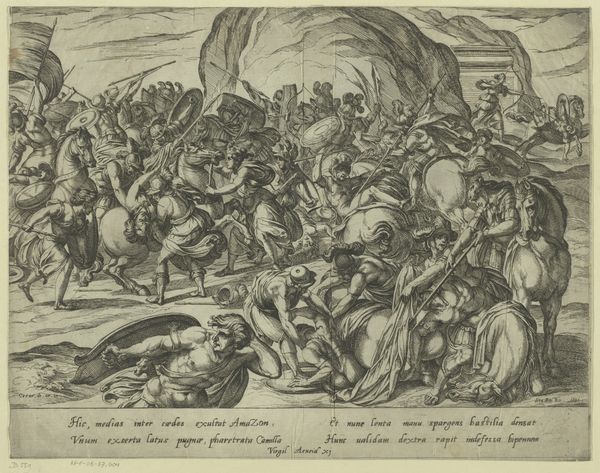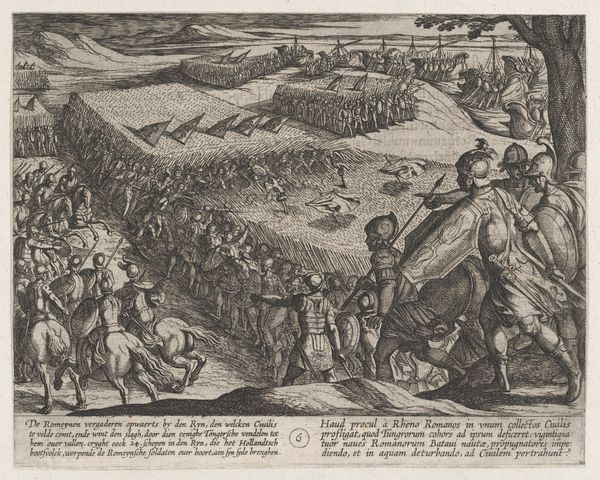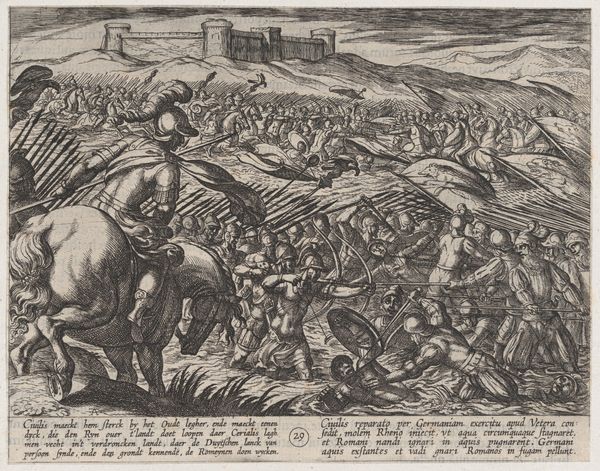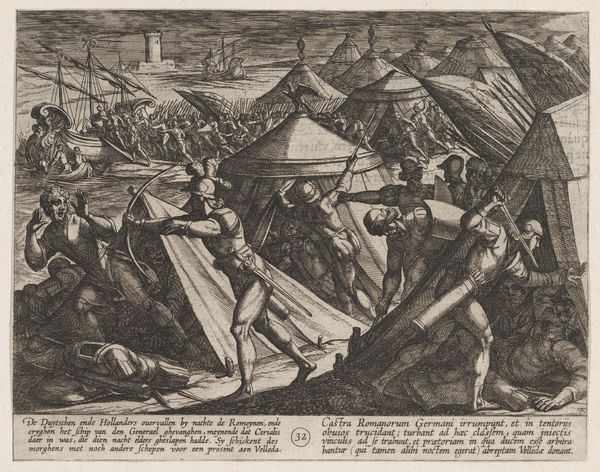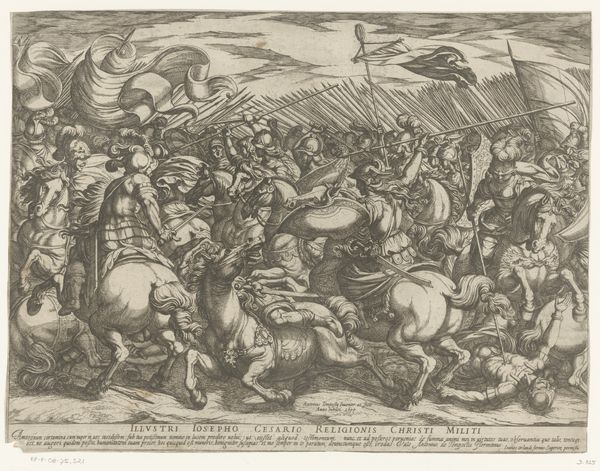
Plate 12: Pulling a Vessel Loaded with Grain to Shore, from The War of the Romans Against the Batavians (Romanorvm et Batavorvm societas) 1611 - 1612
0:00
0:00
drawing, print, etching, ink, engraving
#
drawing
#
narrative-art
#
baroque
# print
#
etching
#
landscape
#
figuration
#
ink
#
history-painting
#
engraving
Dimensions: Sheet: 6 5/16 × 8 1/16 in. (16.1 × 20.5 cm)
Copyright: Public Domain
Curator: We’re looking at “Plate 12: Pulling a Vessel Loaded with Grain to Shore, from The War of the Romans Against the Batavians (Romanorvm et Batavorvm societas),” a work created between 1611 and 1612 by Antonio Tempesta. It resides at the Metropolitan Museum of Art. Editor: It’s overwhelmingly busy. My eye struggles to find a resting point amid the massed figures and the swirling water. It feels...chaotic and laborious. Curator: Tempesta employs a combination of etching and engraving, rendered in ink. Note the baroque stylistic features, especially the dynamism and sense of movement, as well as a fairly classic landscape format for battle scenes. The detailed figuration is certainly baroque as well. Editor: Absolutely. The composition channels tension – all those figures straining, pulling, their efforts seemingly futile. The grain vessel lodged fast is the anchor of that futility. What’s the story being told? Curator: The print series depicts the revolt of the Batavians against the Romans, a historical event of significance in the Low Countries. This specific plate captures the struggle over a vessel laden with grain, a vital resource. We see conflict unfolding—the efforts of both sides to either capture or prevent the capture of those critical supplies. Editor: So the chaos isn't merely aesthetic—it mirrors the conflict itself? The frenzied movements are all pointed at one end: whoever controls the grain controls power. The narrative aspect truly underscores how war boils down to essentials, food, resources, that kind of thing. Curator: Precisely. The densely populated scenes are a common feature of historical prints designed to commemorate or sometimes aggrandize an important moment. Also note the perspective trick used here with the tower and the faraway battle lines – something meant to give an impression of epic scale. Editor: What I initially saw as visual clutter becomes a powerful representation of collective struggle. The technique supports the sense of urgency. Considering the date of the work, it’s interesting how this moment in the ancient world clearly continues to have weight during the 17th century. Curator: Agreed. And by examining the composition of “Plate 12,” we gain a deeper appreciation for the layered historical narratives woven into Tempesta's intricate etching and engraving. Editor: Ultimately, what appeared to be an overwhelmingly hectic illustration contains an engaging illustration that draws us into the drama of both a pivotal historical battle, and an old world still carrying weight generations after it was lost.
Comments
No comments
Be the first to comment and join the conversation on the ultimate creative platform.
